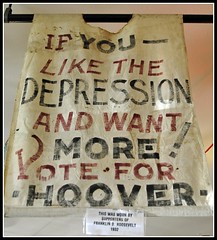People use the term all the time when making purchases. “I can afford it, so why not?” they say as they sign the paper work for a new car, a new house, or swipe their credit cards for that fancy new television. But, can they really afford it? How do you define affordability?
Like many of you reading this, I’ve often defined affordability by whether I can make the payment or not. It was while reading The Millionaire Fastlane that I read a passage that made me rethink how I define affordability. The passage was this one:
Think about the last time you bought a pack of gum. Did you fret over the price? Did you ask, “Hmmm, can I afford this?” Probably not. You bought the gum and it’s done. The purchase had no impact on your lifestyle or your future choices. To a rich man who walks into a dealership and buys a six-figure Bentley without thought, the acts are the same.
Affordability is when you don’t have to think about it. If you have to think about “affordability,” you can’t afford it because affordability carries conditions and consequences. If you buy a boat and resort to mental gymnastics over affordability, YOU CAN’T AFFORD IT. Sure you can assuage affordability and make outlandish arguments, often starting with “I can afford this as long as…” […]
This self-talk is a warning that you can’t afford it. Affordability doesn’t come with strings attached. You can bluff yourself but you can’t bluff the consequences.
So how do you know if you can afford it? If you pay cash and your lifestyle doesn’t change regardless of future circumstances, you can afford it. In other words, if you buy a boat, pay cash, and are NOT affected by unexpected “bumps in the road,” you can afford it. Would you regret a gum purchase if you lost your job a week later? Or if your sales forecast was slashed by 50%? Nope, it wouldn’t make a difference. This is how affordability is measured against your level of wealth.
To overcome wealth impersonation, know what you can and can’t afford. There is nothing wrong with buying boats and Lamborghinis if you can truly afford them. There is a time and a place to indulge.
Reading that, and taking it to heart, it completely changes the perspective on what you can and cannot afford. I have no problem affording the pack of gum, but I certainly couldn’t afford a boat. In truth, I think it’s a bit of an extreme example, but one that we should probably strive for.
Think about some of the more recent purchases you’ve made and whether, using Demarco’s definition of affordability, you could really afford them or not. I know that, if I use that definition, I certainly couldn’t afford the new (to me) car we bought a year ago. The house we almost bought before I quit my job was absolutely out of our affordability range. On the other hand, the new Blu-Ray player we bought to replace our dead DVD player was affordable, and, with kids, somewhat necessary.
In a way, Demarco’s definition of affordability matches up quite well with the cash-only lifestyle that many try and live. If you can’t pay cash for it, you can’t afford it. It’s a personal goal of mine to someday be able to live my financial life in that way. I’d like nothing better to purchase our next car with cash. Or, our next house. Will it happen? Realistically? Probably not. But, it’s a goal, so we’re working towards it.
What about you? How do you define affordability? Does Demarco’s definition make sense to you?
photo credit: Tom Wolf | Photography



